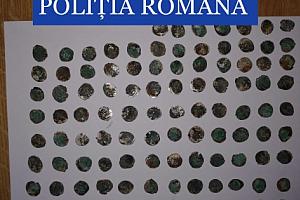Two extremely rare gold coins returned to Romania after being recovered in the UK

Two extremely rare gold coins recovered in the UK were returned to Romania. Representatives of the Metropolitan Police handed the highly valuable artefacts to the Romanian ambassador in London a few days ago. Next, they will be sent to the National Museum of Romanian History in Bucharest.
"We thank the entire team that made this significant recovery possible - Detectives John Roch, Ray Swan and Sophie Hayes, from the Art & Antiques Unit of Met Police, along with our colleagues working in London," the Romanian Embassy in the United Kingdom of Great Britain and Northern Ireland said in a Facebook post.
According to the National Museum of Romanian History (MNIR), the two ancient coins were issued in the 1st century BC. They are part of a treasure stolen from the old Dacian capital Sarmizegetusa Regia in Romania, which was subsequently smuggled out of the country and put on sale on the international numismatic market in Europe and the US. Romanian and British authorities recovered the valuable coins this year in the UK.
The MNIR said one of the coins is a Koson-type stater without a monogram, while the other is a pseudo-Lysimachos-type stater issued at Callatis.
"One of the pieces is a stater issued by king Koson (approx. 44-29 BC), one of Burebista's descendants, and shows on the obverse an eagle with a laurel wreath in its right claw, and on the reverse the legend KOSON rendered in Greek letters and a group of three lictors. The iconography of these coins imitates the representations found on the Roman silver coins denarius issued by Q. Pomponius Rufus in 73 BC, respectively by M. Junius Brutus in 54 BC. The stater from the mint of Callatis, the ancient fortress on the Dobrogean coast of the Black Sea, was issued in the 1st century BC and shows on the obverse the head of King Alexander the Great, worshiped as an Egyptian god, and on the reverse, the goddess Athena Nikephoros seated on a throne and the name of the issuing city," the National History Museum explained.
The National Museum of Romanian History will hold a press conference this Wednesday, June 29, to present the two gold coins to the public.
irina.marica@romania-insider.com
(Photo source: Muzeul National de Istorie a Romaniei)













